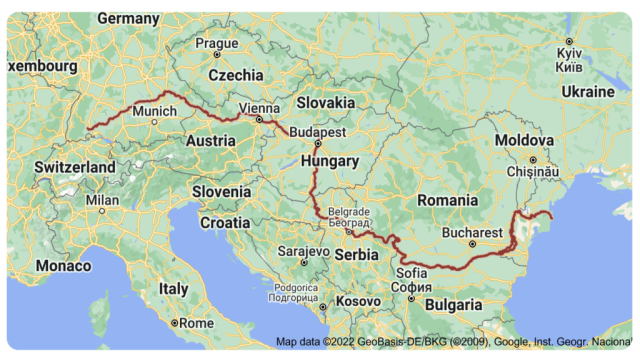Sulina Channel
In an overnight drone strike, Russia targeted ports and grain storage sites along Ukraine’s Danube River. The Danube delta had emerged as an alternate passage for Ukraine’s grain trade after Russia exited the Black Sea grain deal. The deal, previously facilitated by the UN and Turkey, ensured safe transit for cargo ships carrying grain from Ukrainian Black Sea ports to global markets.
The Sulina Channel, a key distributary within Romania’s borders, played a vital role. This channel connects major Ukrainian river ports to the Black Sea and is strategically important for Ukraine’s economy. However, challenges like Russian attacks, port capacity limitations, and congestion at the mouth of the channel have surfaced, raising questions about the sustainability of this route.
Why did Russia target the ports and grain storage facilities along the Danube River in Ukraine?
Russia’s drone strikes aimed to disrupt Ukraine’s grain trade route via the Danube River. This route provided an alternative passage for Ukrainian grain exports following Russia’s withdrawal from the Black Sea grain deal.
How does the Sulina Channel contribute to Ukraine’s grain trade route?
The Sulina Channel, a distributary of the Danube River, serves as a “riverine expressway” for transporting goods from major Ukrainian ports to the Black Sea. It plays a vital role in connecting inland locations to the global market.
What are the challenges faced by Ukraine’s grain trade route through the Danube River?
The route faces threats from potential Russian attacks on Ukrainian ports and grain facilities. Additionally, congestion at the mouth of the Sulina Channel causes shipping delays. Ukraine’s limited port capacity for sudden increases in grain exports is also a concern.
Why did Ukraine historically rely on its rail network and Black Sea ports for grain exports?
Ukraine traditionally favored its rail network and Black Sea ports over the Danube route for grain exports. This preference, combined with a lack of experience, limited the capacity of Ukrainian ports to handle the sudden surge in grain trade through the Danube.
What alternative solution has been suggested for Ukraine’s grain exports?
Sorin Grindeanu, Romania’s transport minister, proposed transporting grain from Ukraine to Romania via rail and using Romanian ports. However, this option could result in financial losses for Ukraine due to loading fees and other expenses.
How does the current situation impact Ukraine’s economy?
Ukraine, known as the “breadbasket of Europe,” heavily relies on agricultural exports, particularly grain. Disruptions and challenges in its grain trade route through the Danube could have significant economic implications for the country.
Month: Current Affairs - August, 2023
Category: International / World Current Affairs






